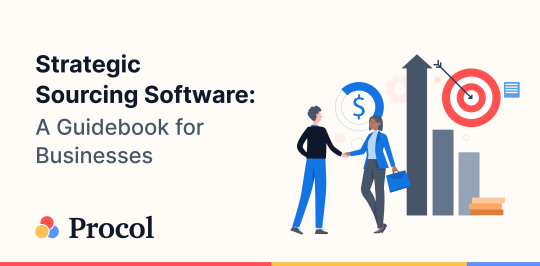RFQ Software: Transforming Procurement for the Digital Age

TABLE OF CONTENTS
- What is RFQ?
- Why is RFQ needed?
- Four types of RFQ
- Decoding the RFQ process
- What is RFQ software?
- How is request for quote software helpful?
- The benefits of RFQ Software: How can RFQ management software enhance the traditional process?
- How does the RFQ platform work?
- Features to look for in RFQ software
In today’s times, efficient and precise procurement processes are crucial for the overall success and sustainability of businesses. The dynamic evolution of technology has revolutionized procurement methodologies. From automating mundane tasks to enhancing decision-making processes, technology has become the driving force behind efficiency and cost-effectiveness in procurement.
With technology spearheading innovation, it’s time to automate and manage the request for quotation (RFQ) process under the procurement cycle.
What is RFQ?
RFQ, or Request for Quote, is a formal document issued by a buyer to potential suppliers, seeking detailed and competitive pricing for particular goods or services. RFQ contains specific information about the goods and services a business wishes to purchase. An essential step in the procurement process, RFQ helps businesses in the decision-making process of selecting a supplier while ensuring cost optimization.
Why is RFQ needed?
RFQ is needed in the procurement process to solicit detailed pricing from potential suppliers. It serves as a formal document from a buyer outlining specific product or service requirements. RFQs ensure that buyers get the most competitive bids by assessing supplier capabilities and comparing prices. RFQ is critical for businesses as it simplifies procurement, contributes to informed decision-making, and ensures transparency.
Four types of RFQ
Here are the four types of RFQ, when they should be used, and their benefits:
Open RFQs
Open RFQs are used to invite bids from any interested supplier. They are ideal for commonly available goods or services with a fairly broad supplier base. Due to a diverse pool of suppliers, open RFQs are known to land buyers with the most competitive pricing.
Closed RFQs
Closed RFQs are used to restrict bids to pre-approved suppliers. They are suited for very specialized procurements with specific requirements. Closed RFQs ensure control and involvement with only a trusted batch of suppliers, reducing potentially associated risks.
Multi-line Item RFQs
Multi-line item RFQs are used for soliciting quotes for multiple items in a single RFQ. They help streamline procurement for various goods or services that are often interconnected. This type of RFQ consolidates multiple requirements into one RFQ, thereby simplifying and making the purchase process more efficient.
Sealed Bid RFQs
Sealed bid RFQs require suppliers to submit sealed or confidential bids by a specified deadline. Commonly used in government contracts demanding high confidentiality. The sealed bid RFQ aims to enhance fairness and transparency in the procurement process by preventing suppliers from influencing each other’s bids.
Decoding the RFQ process
Traditionally, the RFQ process involved a manual, time-consuming approach. The procurement journey started when the RFQ document was created. The RFQ document, often in hardcopy, was distributed manually to potential suppliers. The response to the RFQ came from every medium in the form of emails, faxes, and physical documents, leading to significant time delays and an increased risk of loss or errors.
With the demand for efficiency in procurement processes grew, so did the need for specialized tools.
What is RFQ software?
Request for quote software is a procurement tool created to streamline and enhance the RFQ process. RFQ software is a digital platform that automates the once tedious and manual tasks of creating, distributing, and evaluating RFQs. RFQ platform helps facilitate collaboration and clear communication between buyers and suppliers. Some standout features of RFQ software are document management, real-time notification, and analytics which help aid faster and better decision-making.
RFQ software is a central platform that accelerates procurement timelines and helps in supplier selection. RFQ software empowers businesses to make data-backed decisions, and achieve time and cost savings. RFQ software lets buyers create and distribute RFQ documents. It also lets suppliers submit responses through the same software, centralizing the entire process from start to end.
How is request for quote software helpful?
If you are tired of spending hours of manual effort into creating RFQ and inefficiencies are creeping into your procurement cycle, then it’s time to use RFQ software. RFQ platforms minimize human errors, improve process accuracy, and ensure precision. RFQ tool is especially useful when dealing with complex purchases, multiple vendors, and detailed specifications. When time is of the essence, and waiting for responses through traditional channels becomes a bottleneck, RFQ software facilitates real-time communication, reducing cycle times and expediting decision-making. That leads to cost optimization, improved collaboration, and centralized data management. RFQ software is a strategic ally for any businesses wishing to achieve efficiency in their procurement efforts.
The benefits of RFQ Software: How can RFQ management software enhance the traditional process?
The benefits of RFQ software go beyond efficiency and accuracy, impacting the bottom line of organizations. RFQ platforms empower businesses to streamline their procurement processes, from document creation to supplier engagement, replacing traditional manual methods with digitized, efficient workflows.
| Challenges of the Traditional Way | Benefits of request for quote software | |
|---|---|---|
| Workflows and processes | The traditional RFQ process involved mountains of paperwork and manual coordination. Additionally, each RFQ process might have varied, leading to inconsistencies. | With RFQ software, the entire process becomes streamlined. From creating and sending RFQs to receiving and evaluating responses, every step is digitized, reducing time and effort. RFQ software allows for customization while maintaining standardized processes. Organizations can adapt the software to fit their specific needs while ensuring consistency in their procurement practices. |
| Communication | Waiting for responses through emails, faxes, and phone calls could be a lengthy process. | RFQ software facilitates real-time communication. Suppliers can promptly submit their bids, enabling quicker decision-making and reducing procurement cycle times. |
| Accuracy | Errors in manual data entry or miscommunication were not uncommon. | The digital nature of RFQ software minimizes human errors. Accurate data entry, standardized responses, and automated calculations ensure precision throughout the procurement process. |
| Information | Information scattered across emails, documents, and spreadsheets made retrieval a daunting task. | RFQ software serves as a centralized hub. All relevant data – from RFQ documents to supplier responses – is stored and accessible in one place, promoting organized and efficient data management. |
| Collaboration | Collaboration between buyers and suppliers often involved back-and-forth emails and phone calls. | RFQ software provides a collaborative platform. Buyers and suppliers can communicate, ask questions, and share documents within the system, fostering transparent and efficient collaboration. |
| Decision-making | Making decisions based on scattered information and intuition was a common practice. | RFQ software offers robust analytics tools. Buyers can leverage real-time data and insights to make informed decisions, optimizing costs, and identifying opportunities for improvement. |
| Resources | Manual processes often incurred hidden costs and were time-consuming. | RFQ software contributes to cost savings by reducing the time spent on administrative tasks, minimizing errors, and optimizing supplier relationships. The efficiency gained directly translates into tangible financial benefits. |
How does the RFQ platform work?
RFQ platforms comprise a suite of tools designed to facilitate the end-to-end RFQ process. Document creation, supplier communication, response analysis, and decision-making are seamlessly integrated into a user-friendly interface. The software often leverages cloud technology, ensuring accessibility and collaboration from anywhere in the world.
Here’s a step-by-step breakdown of how the RFQ platform works:
The RFQ process kicks off with the creation of a digital RFQ document within the software. Buyers define the scope, specifications, and any other important details. The software allows for easy customization, ensuring the RFQ aligns with specific procurement needs.
With a few clicks, the RFQ is disseminated to a pre-selected list of suppliers or a wider audience. The software’s automated distribution ensures that suppliers receive the RFQ promptly, eliminating delays associated with traditional methods.
Suppliers, equipped with the RFQ software, submit their responses electronically. The platform allows for structured and standardized submissions, simplifying the evaluation process. Real-time notifications keep buyers informed of each response, fostering a dynamic and responsive procurement environment.
Features to look for in RFQ software
Choosing the right request for quote software is paramount to achieving efficiency and success. Here are the must-have features that align with your procurement objectives:
1. User Interface
An intuitive and user-friendly interface is paramount for successful adoption. The RFQ software should facilitate seamless navigation, making it accessible to both procurement professionals and suppliers.
2. Collaboration Tools
Effective communication between buyers and suppliers is a cornerstone of successful procurement. Look for RFQ software that easily has inbuilt collaboration tools or integrates with one, such as messaging systems, discussion forums, and document sharing capabilities. These features foster transparency and enhance the overall efficiency of the procurement process.
3. Customization
Every procurement process is unique, and the ability to customize RFQ documents and processes is crucial. Customization options offer flexibility and enhance user experience, allowing organizations to tailor the platform to their unique needs and procurement requirements.
4. Analytics and Reporting
The ability to take out insights from procurement data is a key advantage of RFQ software. Robust analytics and reporting tools empower organizations to make data-driven decisions. Look for RFQ management software that offers real-time dashboards, customizable reports, and predictive analytics to stay ahead of market trends and on top of supplier performance.
5. Integration
Seamless integration with existing systems is crucial for a smooth transition to RFQ software. Whether it’s ERP integration, supplier management platforms, or e-procurement solutions, the request for quote software should offer compatibility with a range of systems to ensure a cohesive procurement ecosystem.
6. Automated Workflow
Efficiency is at the core of RFQ software, and an automated workflow is a key component. From the initiation of RFQs to the evaluation of supplier responses, the RFQ platform should automate repetitive tasks, reducing manual effort and accelerating the entire procurement process.
7. Supplier Management
Look for RFQ tools that include robust supplier management features. The ability to assess supplier performance, track historical data, and maintain a comprehensive supplier database ensures informed decision-making and the establishment of strategic supplier relationships.
8. Document Management
Effective document management is critical in the RFQ process. The RFQ software should facilitate easy creation, distribution, and storage of RFQ documents. A centralized repository ensures that all relevant documents are accessible, minimizing the risk of information gaps.
9. Security
Given the sensitivity of procurement data, security is non-negotiable. Ensure that the request for quote management software adheres to robust security measures, including data encryption, user authentication, and secure access controls, safeguarding sensitive information throughout the procurement lifecycle.
10. Scalability
Choose RFQ platforms that can scale with the growth and evolving needs of your organization. Whether you’re a small business or a large enterprise, the RFQ software should be flexible enough to accommodate changes in procurement volumes and complexities.
In procurement, every small detail matters. When you choose RFQ software, you give your procurement process a boost toward elevated efficiency, informed decision-making, and sustained success. RFQ software fosters collaboration, streamlines processes, and empowers organizations to navigate the procurement landscape with agility and strategic foresight.
Get a Free Demo
We'd love to hear from you. Please fill out this form to schedule a demo with us. You can also give a call on +91 76666 82222



